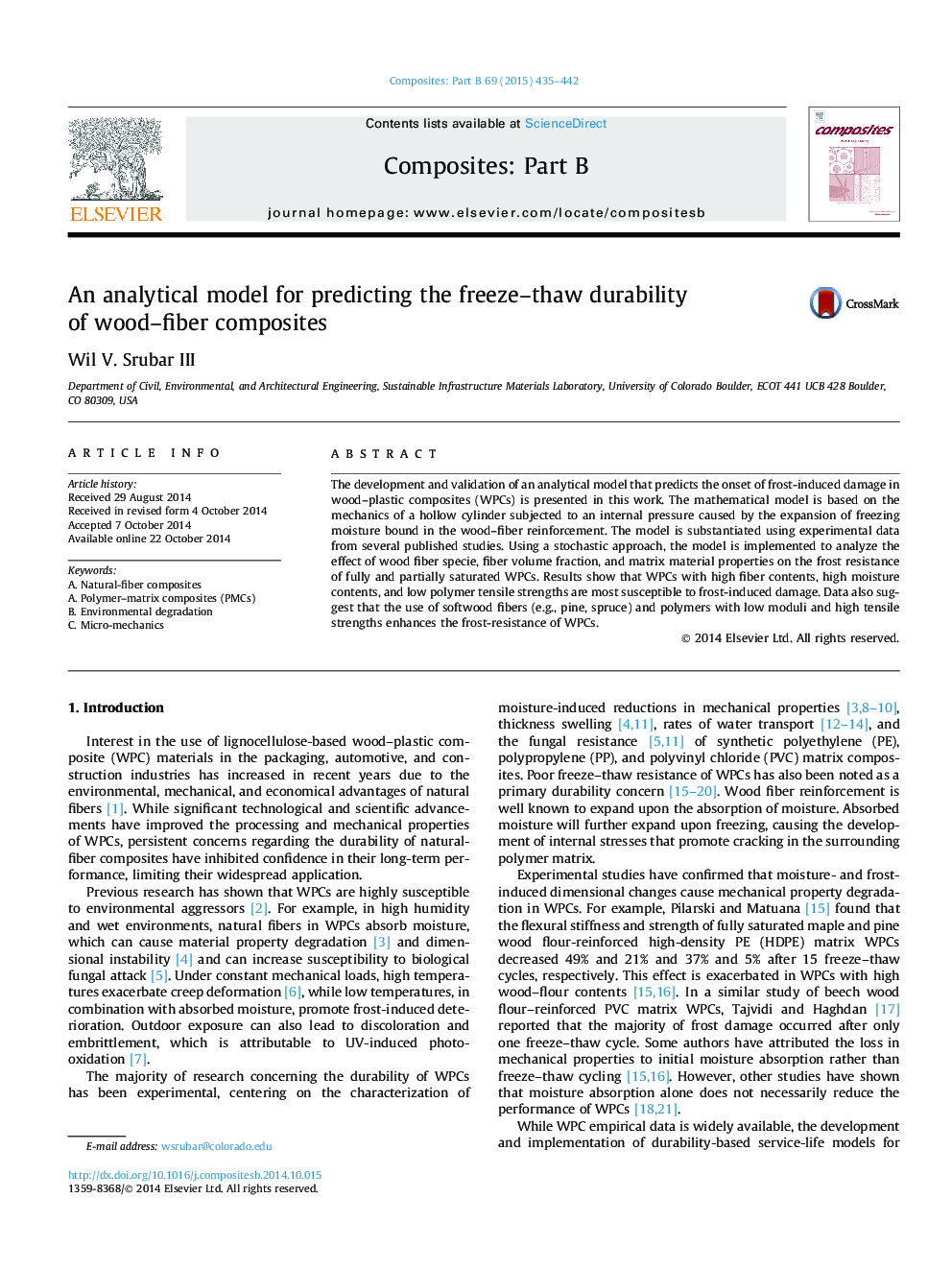| Article ID | Journal | Published Year | Pages | File Type |
|---|---|---|---|---|
| 817596 | Composites Part B: Engineering | 2015 | 8 Pages |
The development and validation of an analytical model that predicts the onset of frost-induced damage in wood–plastic composites (WPCs) is presented in this work. The mathematical model is based on the mechanics of a hollow cylinder subjected to an internal pressure caused by the expansion of freezing moisture bound in the wood–fiber reinforcement. The model is substantiated using experimental data from several published studies. Using a stochastic approach, the model is implemented to analyze the effect of wood fiber specie, fiber volume fraction, and matrix material properties on the frost resistance of fully and partially saturated WPCs. Results show that WPCs with high fiber contents, high moisture contents, and low polymer tensile strengths are most susceptible to frost-induced damage. Data also suggest that the use of softwood fibers (e.g., pine, spruce) and polymers with low moduli and high tensile strengths enhances the frost-resistance of WPCs.
